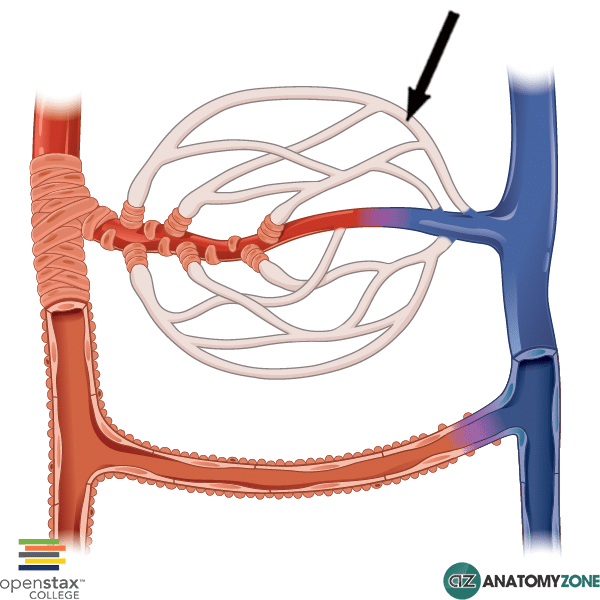Blood Capillary
The diagram illustrates a capillary.
Capillaries are the smallest type of blood vessel in the human body. They are responsible for the transfer of oxygen, carbon dioxide, fluids, nutrients, and waste products to and from the body’s tissues. Capillaries form a connection between arterioles and venules. Organ systems that are highly metabolically active have dense capillary networks, such as the muscular system and renal system.
Structure: Thin walled one cell layer thick endothelium (simple squamous epithelium).
Blood flow sequence
heart –> arteries –> arterioles –> capillaries –> venules –> veins –> heart
There are three types of blood capillaries:
- Continuous
- Fenestrated
- Sinusoid
In some capillaries, the blood flow into the capillary is regulated by precapillary sphincters (bands of smooth muscle) at their point of origin from the arteriole off which it branches. These precapillary sphincters are found in the mesenteric microcirculation.
